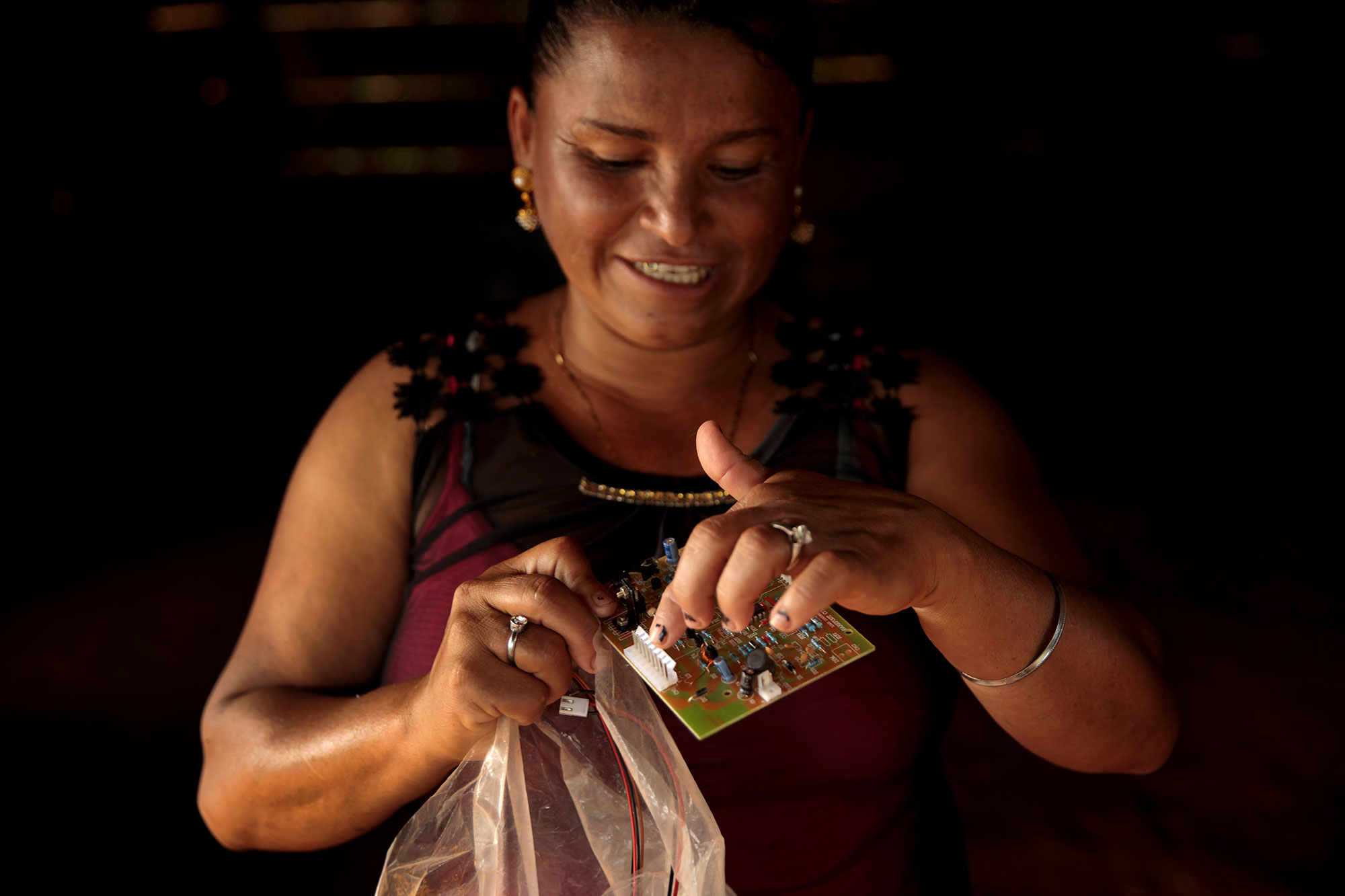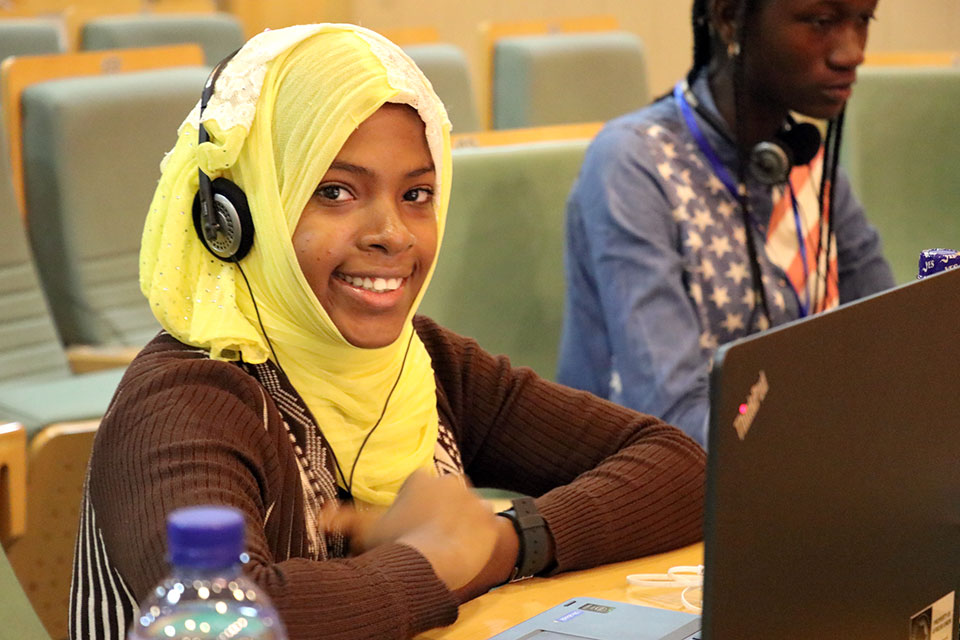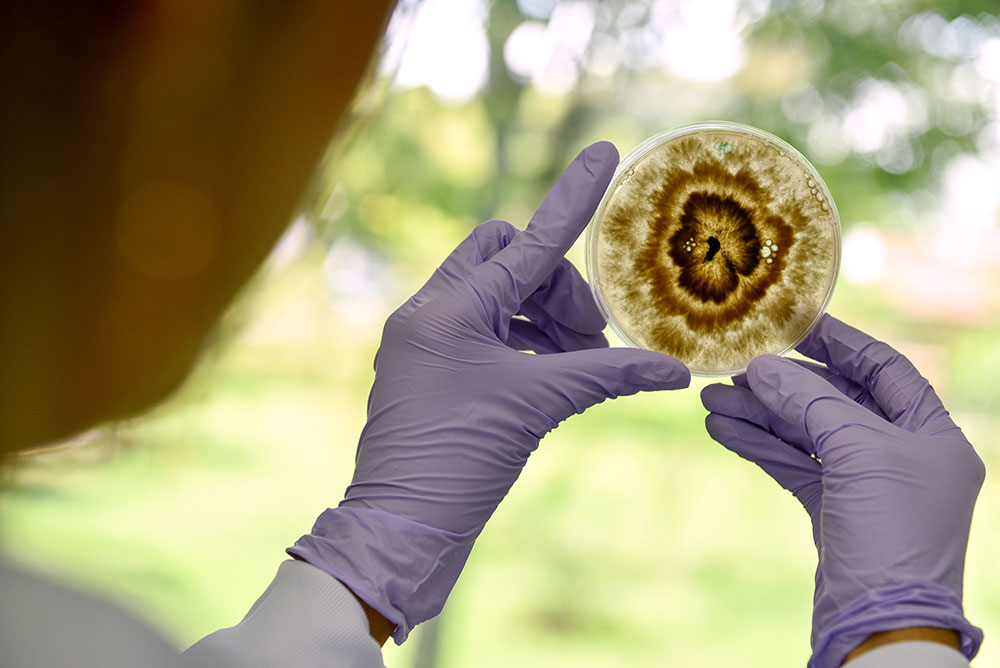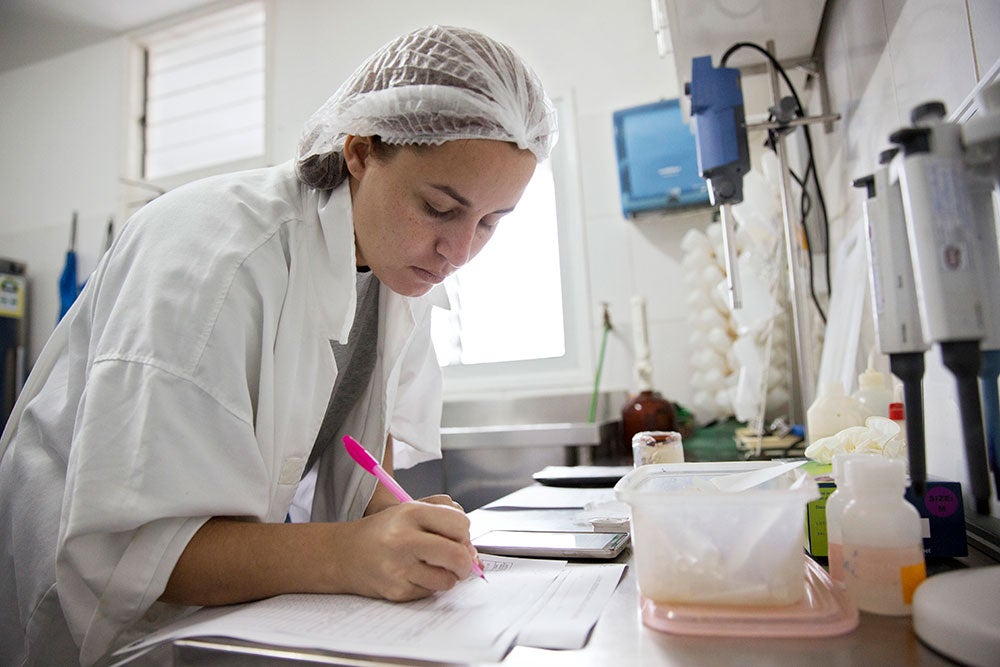Sticking points in STEM
A look at three challenges women and girls face along their STEM journeysDate:
This story was originally published on Medium.com/@UN_Women

When a curious mind is given resources and opportunities to learn, research, test, teach, and invent, the possibilities are limitless. A woman builds solar lanterns that bring light to her Guatemalan town. Girls code a drone controlled by SMS messaging that will dispense medicine in rural areas. A woman pharmaceutical chemist wins the Nobel Prize for research on anti-malarial compounds that improve the health of millions. Women and girls in STEM are creators, entrepreneurs, innovators and leaders. They’re tackling some of the most pressing global challenges head-on, but, across the field, their participation remains relatively low. Why?
Attracting her intellect

Too often, women and girls face adversities that hinder their education, training and entry into the STEM workforce. Although globally, girls’ enrolment in school has gone up within recent decades, in many settings, socio-economic and cultural obstacles such as prioritizing boys’ education, inadequate school sanitation facilities, and school-related gender-based violence prevent female learners from completing or benefiting fully from a high quality STEM education.
Furthermore, the global digital divide disproportionately prevents women and girls from accessing online STEM information and opportunities.
Beyond access, perceptions of STEM fields influence women and girls’ participation. For too long, gender biases and stereotypes have steered women and girls away from science-related fields. Only about 30 per cent of all female students select STEM-related fields in higher education and even fewer pursue Doctoral degrees or hold leadership positions.
The effects of these gender disparities ripple across workplace culture, policies and narratives, which can exclude or push out women and girls from the classroom to the C-suite.
Retaining women workers

The nature of work is changing, and the STEM workplace must change with it in ways that benefit women. Diverse and gender-equal leadership is crucial for creating workplace cultures where all can thrive. Today, just 28 per cent of researchers worldwide are women, and numerous studies have found that women in STEM fields publish less, are paid less for their research and do not progress as far as men in their careers.
To counter these statistics, employers must incorporate gender-sensitive policies for recruitment, promotion and pay scales, provide flexible schedules and family leave and have zero tolerance for sexual harassment. With inclusive workplaces serving as empowering environments, women scientists can focus on what’s important: unlocking their full potential as innovators for a better tomorrow.
Redefining reintegration
Returning to work after leave can be challenging. While many companies offer employees some flexibility to ease work-life friction, such as the ability to work part-time or telecommute, fewer employers address the unique challenges that working parents face. Mothers retuning from extended leave benefit from programmes designed to ease transitions, adequate facilities and scheduling for breastfeeding and other maternal and child health needs, and on-site child care. And because the STEM fields change rapidly with scientific developments and technological innovations, women returning to work or entering the workforce need upskilling/re-skilling opportunities to stay abreast of the latest advancements and grow the pipeline of experienced and knowledgeable women professionals.

While various career stages pose unique challenges for women and girls in STEM, they also provide immense potential for individual and societal advancement. To address the world’s most pressing problems, we need gender-equal STEM engagement at every step of the way. So, whether she wants to study nanoparticles, conduct research at the bottom of the ocean, or 3D print prosthetic limbs, let her study, let her work, let her lead. Her curious mind is needed.